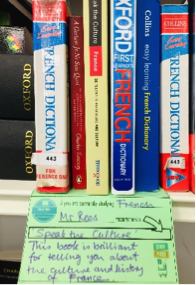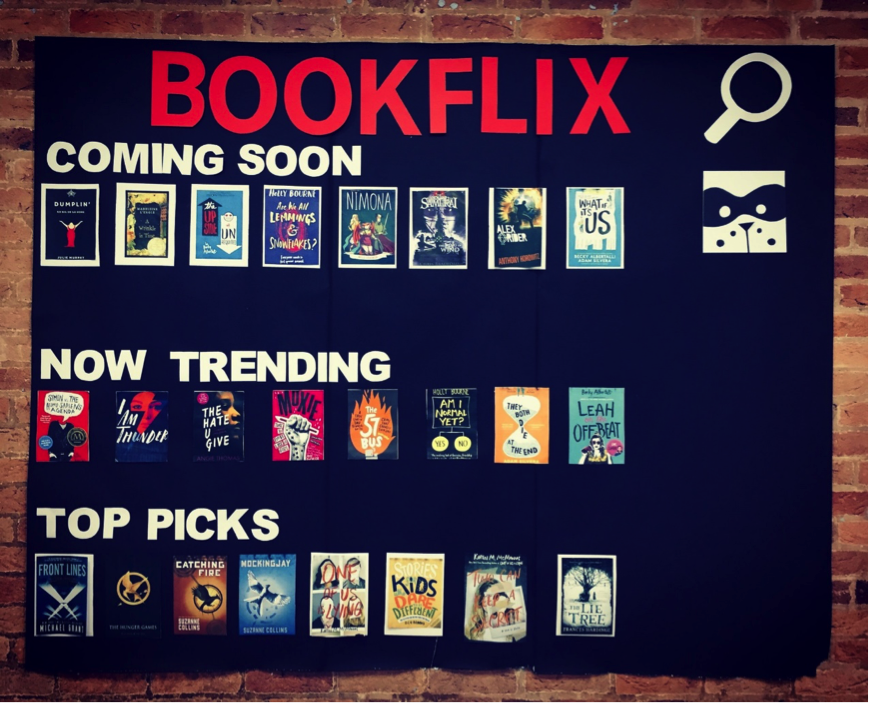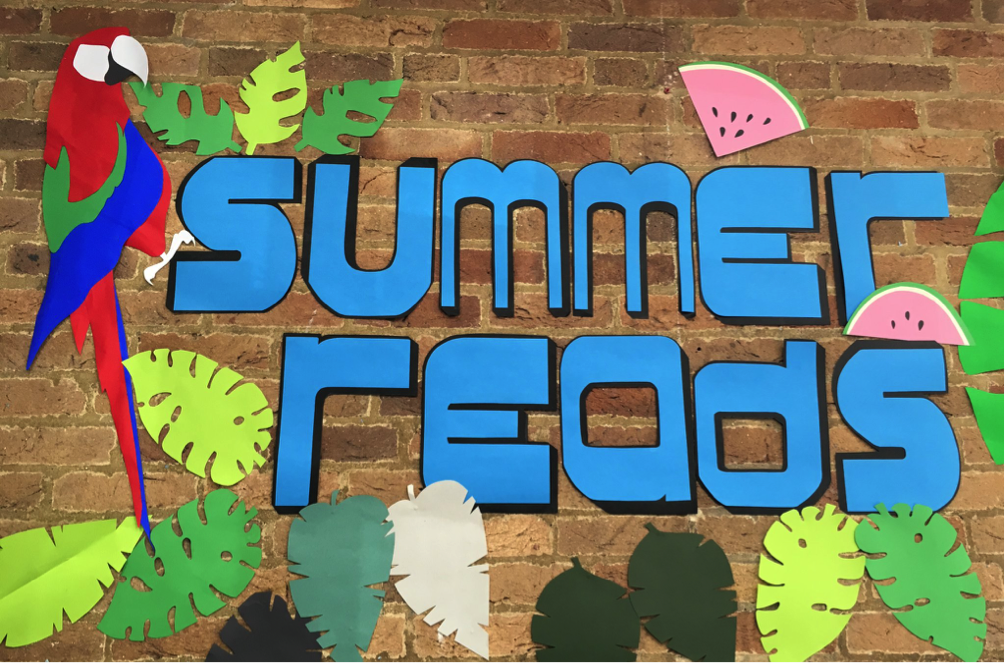Before I explain how our school library is the heart of the school, I need to take you back to May 2017. I started my role as reading engagement coordinator in Queensbridge School – a mixed comprehensive in Birmingham – having come from a background in university libraries and education. Despite a life-long love of young adult (YA) fiction, libraries and reading, this was my first experience working in a school library and my first day back at school for a long time.
The library was new, having been relocated from another part of the school and opened a year before. So, there was definitely plenty of scope to create an inclusive, supportive, welcoming and creative space – which I love to do. As I built the role, it became apparent that the library was about more than books; it was a hub for some of our most vulnerable pupils and getting to know these young people was key to them making the most of the library resource.
Schools libraries are a much-needed safe space
Making the library an enticing and safe space was something that I started to work on as soon as possible, and I began to create huge displays that could be seen from the corridor as pupils and staff walked by. Each new display provides an insight into a calendar of events such as Black History Month, International Women’s Day, World Poetry Day, Refugee Week and Pride Month. I continue to build on this programme, and related books and articles are on display in the library for pupils and staff to borrow or link with their lessons.

Of course, the main part of my role is ensuring that our pupils have access to inclusive, diverse and exciting books. I work closely with the literacy team and form tutors to devise various ways of promoting reading. Through Drop Everything and Read (DEAR) time, I organise competitions, compile pupil-reading data each month, create displays, liaise with other local schools and, most importantly, celebrate pupils’ reading achievements. DEAR is when pupils and staff read together at a certain time, allowing the opportunity to open a conversation about reading and for pupils to come to the library to change their book.
School libraries support reading for empathy
The ethos of Queensbridge School centres on books and the importance of reading, not only for academic purposes but also for empathy and inclusivity. We believe that seeing adults reading is a positive role model for children. And our view concurs with a recent Literacy Trust survey that named education staff among the most important exemplars for young people. An important aspect of my job, therefore, is ensuring that our pupils see adults read; however that may be achieved.
We know that reading for pleasure is important for developing empathy but, to create a reading ethos in schools, lessons need to be linked to wider reading and the library. Working alongside a colleague in the English department, I decided it would be invaluable for our pupils to see more subject-specific texts in the library.
Subject teachers have volunteered as ‘Reading Champions’ to make the non-fiction section even more relevant to their subjects. They have written bookshop style recommendations and we have placed these on the library shelves so pupils can see the link to subjects and wider reading. Pupils learn how important it is to broaden their reading horizons as part of their educational progress. Everyone involved soon see that the library is the heart of the school.

School library sessions familiarise children with genres
Children enjoy books they can relate to, with character types and names with which they are familiar. During the autumn term, I run book choosing sessions with our Key Stage 3 pupils and use the acquired data to buy books in the genres they find interesting.
Connecting strongly with characters on the page helps children develop their relationships with real people in the wider world. Sessions like these build a library that reflects our community and encourages our children to read books that develop empathy.
Part of the session uses a chart that encourages pupils to think about what genres they like. The chart starts with the strapline ‘Do You Like Films That Are Set in the Real World?’ and is linked to the idea of ‘Bookflix’ using a big display. It might seem odd that I started a session about books, emphasising film and what pupils like to watch, but this approach helps the more reluctant readers get involved and (dare I say it) excited about genres without being overwhelmed.

Pupils choose books based on the blurb, the cover and the first page, which allows me to see first-hand what attracts them to specific books. They then have the opportunity to talk to their peers about what they like or don’t like about their chosen book.
I have researched and found a wealth of evidence illustrating the benefits reading has on emotional wellbeing, including alleviating stress and providing insights into the wider world. In fact, reading for pleasure directly impacts our pupils’ wellbeing, mental health and academic success. Finding the right reading material can be fundamental to a pupil’s success and personal growth.
School libraries can adapt to lockdown!
Due to restrictions imposed as a result of COVID-19, it’s been a challenging year for everyone. Our school library was closed temporarily, but that hasn’t stopped us from celebrating books and reading or promoting reading for pleasure. We decided to use an e-book platform in place of physical books and the library space during last summer term. Although this has been a workaround, we have been pleased with how it has encouraged reluctant readers and helped our pupils with SEND too, as they can change the font and background colour of the books they choose. We also made a large selection of audiobooks available.

World Book Day became an online celebration during lockdown, and the result was really exciting. It went beyond the expectations of dressing as a character, and our Key Stage 3 pupils entered competitions, engaged with authors and completed tasks throughout the day. I started an online short story group that met virtually during lockdown; we read the stories beforehand and then had 30-minute discussions with staff and pupils.
Social media has been particularly valuable for maintaining contact throughout lockdown. It’s a very useful tool for showing our parents/carers what is happening with reading activities, new book recommendations and reading news. Connecting with authors, community groups and other school libraries can all happen through school library social media accounts.
I’ve certainly found the past four years interesting. Creating displays and activities, providing reading support and learning to deal with the ‘new normal’ during the pandemic – working in a school library certainly presents challenges and surprises! Not least of all, live-tweeting my way through World Book Day, which was a long way from my original aim of making the library accessible and inclusive! I feel more strongly than ever that the school library is the heart of a school and is much needed to support our young people by providing varied reading opportunities.
Thank you for visiting our blog. Our vision here at Books2All is a world where every child finds the books that help them reach their true potential. If you have spare books in good condition at home that you think might be appropriate for school children or represent a school and would like to register to receive donated books, please download the Books2All app from the App Store or Google Play.
Banner image courtesy of Jenny Howe


Isn’t this what ‘librarians’ do on a daily basis?
Hi Jayne
Yes, a school librarian will do many of these things or similar. The shock factor really is that a large number of our schools no longer have effective libraries.
Our mission is to raise awareness of this educational inequality by showing what should be happening with children’s literacy everywhere.
We will be publishing a blog shortly about what it is like in a school where the library has gone or is greatly diminished.
Hi Jayne,
We do this on a daily basis but with budgets being renegotiated it’s increasingly important to create an ethos where reading is central to everything at school, particularly a secondary school. We place an emphasis on reading for empathy and pleasure, which we have found greatly helps our pupils’ mental health and helps across the whole school. I think it’s so important to share best practice in how schools use the library space or, indeed, help to develop a library where schools and communities don’t have one.
Jenny
Yes, this is what librarians do every day but often the only people who are fully aware of it are the librarians themselves and, possibly, any staff they collaborate with although it’s likely said staff will only be aware of the bit of the library that impacts them directly.
A school librarian’s job is very wide-ranging, reaching and impacting on the whole school community and we need to tell people what the job really involves (even if it seems really obvious) because if we, school librarians don’t, then who will? Blogs like this advocate, promote and inform – hopefully beyond the school library community.